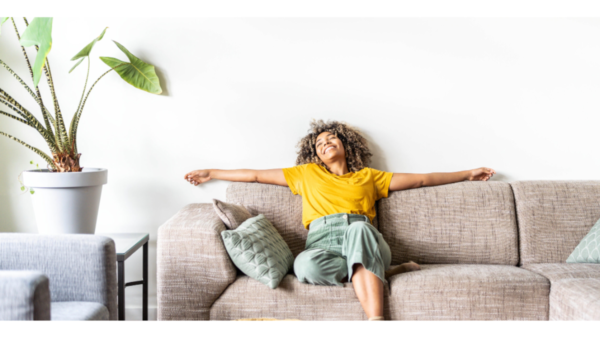
Black Headline News
Minnesota Spokesman Recorder
By MSR News Online
Almost every part of a home can impact the quality of life for someone living with a dementia-related illness and their family care partners—even seemingly cosmetic choices such as wall colors, furniture patterns, and dishware. As part of National Alzheimer’s Awareness Month, the Alzheimer’s Foundation of America (AFA) is offering tips for creating a dementia-friendly home.
Through The Apartment—a full-scale model dementia-friendly residence—AFA shows different adaptations families can make to make their homes safer and more dementia-friendly.
“Most homes were not designed with the needs of someone living with a dementia-related illness in mind, but virtually every aspect of a home can affect the person’s quality of life,” said AFA President & CEO Charles J. Fuschillo, Jr.
“From purchasing higher-tech appliances all the way down to labeling dresser drawers and putting up old family photos, there are a variety of adaptations family care partners can use to make their loved one’s home more dementia-friendly.”
Steps that families can take include:
- Being mindful of color choices and contrast. Colors can be used to help with mood. For example, blue often has a calming effect and is great to use in places that promote relaxation, such as lounge areas, bathrooms, and bedrooms. Brighter colors like red, purple, and orange can be energetic and stimulating, and, therefore may not be the best choice for use in these rooms.
- Color contrast is important too. It aids with vision, depth perception, and spatial orientation. Dishware that contrasts with the tablecloth color makes it easier for someone with dementia to see the food on the plate.
- Providing visual cues. Labeling is an easy, low-cost adaptation that anyone can make. For example, putting labels on dresser drawers with the name of the contents (i.e., shirts, pants, socks, etc.) and a small picture is an effective memory cueing technique.
- Choosing proper lighting. Lighting obviously influences eyesight, but it can also affect the body and behavior. Blue light rays stimulate the brain, increase alertness, and elevate energy levels, but also negatively impact sleep quality in the evening. Lights that produce glare may hinder vision for someone with dementia. Flickering lights can increase agitation.
- Glare-free lighting aids with sight, while lighting that operates with a circadian rhythm mimicking natural patterns of high blue light in the day and low blue light at night can improve sleep and reduce agitation.
- Using reminiscent decorations. Décor and photos can serve a purpose beyond making a home aesthetically pleasing—they can promote familiarity, aid with mood and assist with memory recall. Beach/nautical-themed pictures can promote positive memories for someone who enjoys the ocean. Vintage magazines on shelves and tables can help stimulate memory and remind the person about a familiar time period from their past. Family photos reinforce the faces of cherished loved ones.
- Embracing technology. Technological tools can provide additional support to care partners, especially if they aren’t in the home with the individual living with a dementia-related illness. Interactive virtual assistant technology can enable caregivers to schedule reminders and events that will be audibly played for a loved one, such as “it’s lunchtime now” or “time to take your medication.”
Care partners can utilize app-controlled thermostats to check, program and change the temperature remotely, as well as smart smoke and carbon monoxide alarms which can be programmed with friendly human voices and be controlled and monitored via an app.
Families can learn more about these and additional ways to create a dementia-friendly home by visiting The Apartment page on AFA’s website at www.alzfdn.org/theapartment. The page includes a brief film tour along with The Apartment: A Guide to Creating a Dementia-Friendly Home, a free 20-page booklet that showcases each of the rooms with detailed, step-by-step summaries of dementia-friendly improvements that can be made. Individuals can also contact AFA’s Helpline 7 days a week by phone (866-232-8484), webchat (www.alzfdn.org), or text message (646-586-5283).
Source: Alzheimer’s Foundation of America









You must be logged in to post a comment Login